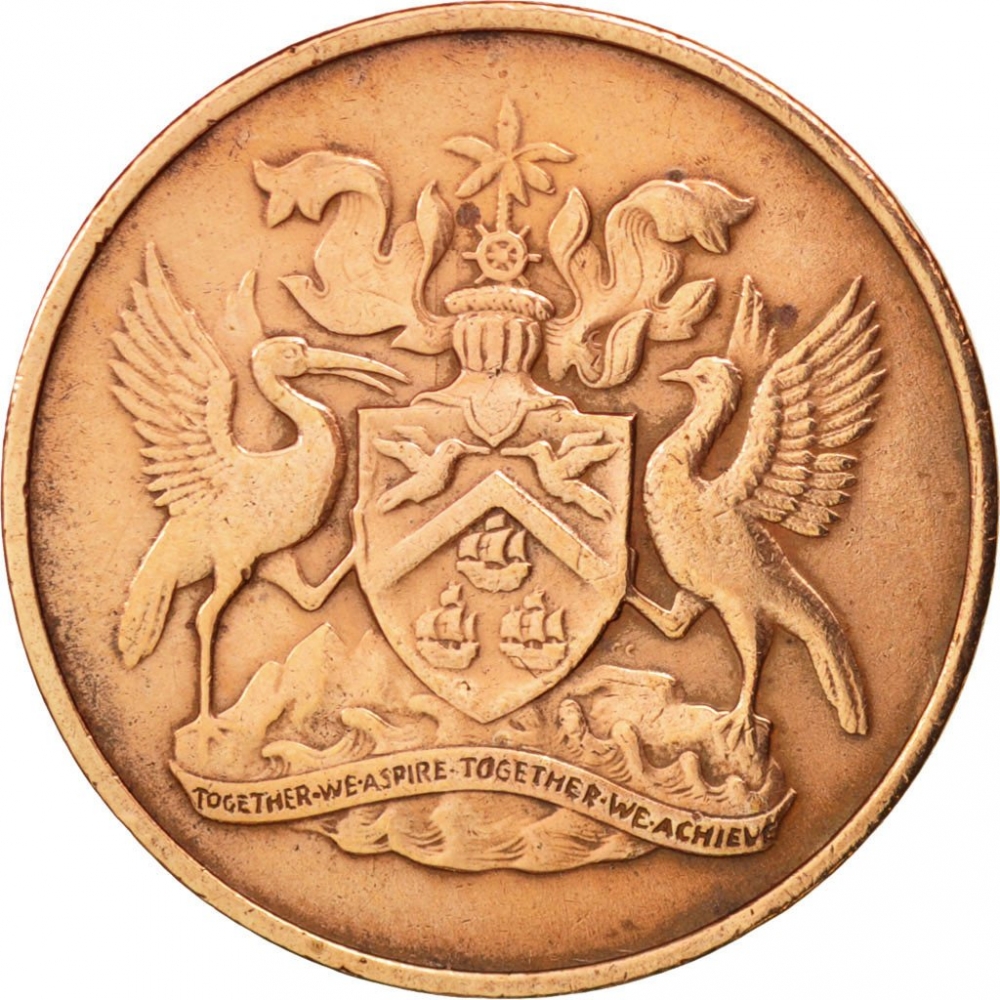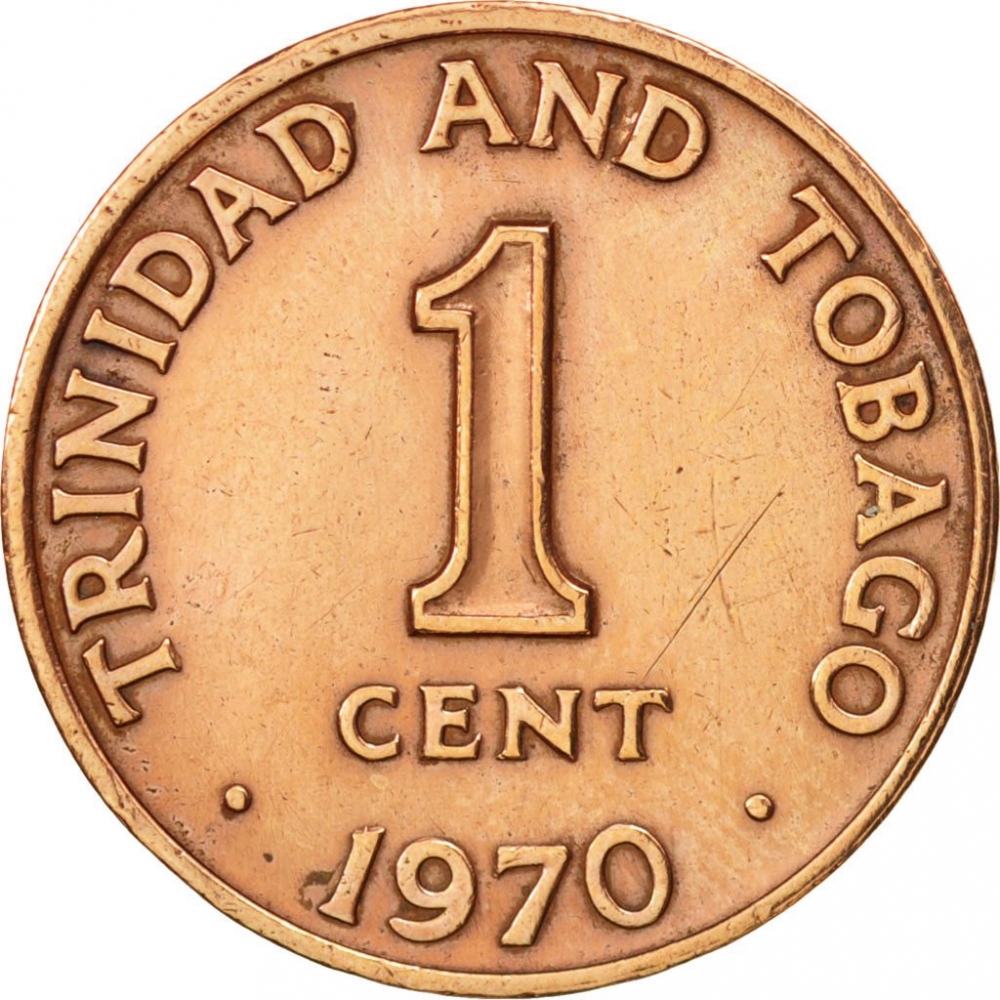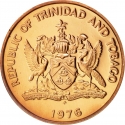You are about to finish your registration. Please check your mailbox (including spam folder). There should be a letter with a confirmation link. Check setting to make sure that your e-mail address is correct.
Send letter againDescription
The Republic of Trinidad and Tobago is the southernmost island country in the Caribbean.
Obverse

|
Coat of arms of Trinidad and Tobago. Mintmark (if any) below. CC |
|---|---|
Reverse

|
Denomination surrounded by lettering, date below. TRINIDAD AND TOBAGO |
| Edge |



